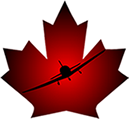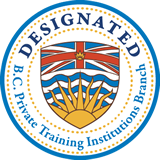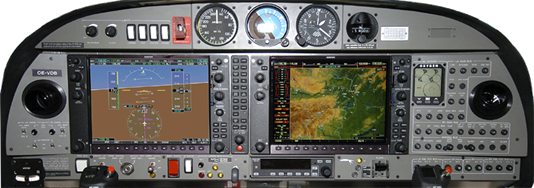 |
|
Instrument Flight
“I have never been to Pulo Prabang alas, but I understand it possesses all the advantages of Borneo without the drawback of head-hunters.” --Patrick O’Brian- Under current regulations, candidates for the Canadian Private Pilot Licence (Aeroplane) are required to receive a minimum of five hours instrument flight training. Up to three of those hours may be completed on an approved flight simulator. The licence candidate is also required to demonstrate some degree of proficiency with instrument flight on his or her flight test. Two exercises are focused on this activity: straight and level flight for two minutes, a 180 degree rate one turn, two more minutes straight and level flight, and recovery from an unusual attitude. For many general aviation pilots, this may be the last time they experience instrument flight unless they continue their training by earning a night, VFR over the top, or instrument rating. As we all know, skills left lying dormant do not improve with time. We attempt to train aspiring pilots, with their brief foray into instrument flight, to extract themselves from an encounter with non-VFR conditions, for example inadvertent entry into cloud. As an instructor I’ve heard many, many times students saying, “But I’ll never do that.” And yet, every year VFR pilots are seriously injured or killed, losing control of their aircraft as a direct result of spatial disorientation caused by flight into IMC conditions. According to National Transportation Safety Board (NTSB) statistics, attempted VFR flight into IMC accounts for a significant portion of the total number of accidents resulting from spatial disorientation. In the article, “Medical Facts for Pilots (Publication AAM-400-00/1),” prepared for the FAA Civil Aerospace Medical Institute, editor Melchor J. Antunana, M.D., states, “Statistics show that between 5 to 10% of all general aviation accidents can be attributed to spatial disorientation, and 90% of these accidents are fatal.” According to the AOPA Air Safety Foundation, “The US Aeronautical Information Manual ranks spatial disorientation among the most cited contributing factors to fatal accidents. From 1994 through 2003 it caused at least 202 accidents [in the United States]. One hundred eighty-four of them involved fatalities. The following is a part of the synopsis prepared by the Transportation Safety Board of Canada (TSB), Final Report A98A0184: “Spatial disorientation occurs when a pilot's sense or "orientation percept" of the position, motion, or attitude of his/her aircraft or himself/herself with respect to the earth's surface and the gravitational vertical is based on incorrect or misinterpreted sensory information. Pilots with limited instrument flight time are most susceptible to spatial disorientation. “Knowledge and experience are the key determinants of a pilot's susceptibility to disorientation. A pilot's only defence against spatial disorientation is to develop the ability to suppress natural vestibular responses through training and practice (vestibular suppression), and to always use visual information from the instruments to maintain spatial orientation (instrument discipline) and, consequently, his/her situational awareness.” Having an instrument rating is only part of the remedy. According to NTSB statistics for the period 1994-2003, 17% of aviation accidents resulting from spatial disorientation involved instrument-rated pilots. As Ann Walco, a commercial pilot, flight instructor, and FBO manager so clearly put it, “You must continue to practice your skills. You are either formally trained and current or you are unqualified.” As most of us have learned, a little knowledge can be a very dangerous thing. It is certainly possible to know just enough to get yourself into serious trouble without possessing sufficient depth of knowledge to get yourself back out. Taking a bit of time to get some re-currency training on instruments is an excellent plan. You may never intend to make use of those skills. Most VFR pilots avoid flying into IMC conditions like the plague. But, and this is the big but, it does happen. You can, inadvertently, find yourself in a situation where visual reference is lost or very uncertain. This is not a moment to be relying on skills learned years ago and never practiced. You can think of it in the same light as practicing emergency procedures or taking a jacket with you on a sunny day. It may be that being ready for an event you hope will never occur is your best insurance against it actually coming to pass. You may also be very pleased with the way a bit of additional instrument training will fine-tune the rest of your flying. If we can manage to remove some of the “head-hunters” from a potentially dangerous situation by being well trained and current with the necessary skills, it can substantially reduce the odds we will become one of the sad statistics compiled by the TSB and the NTSB regarding spatial disorientation events. |



